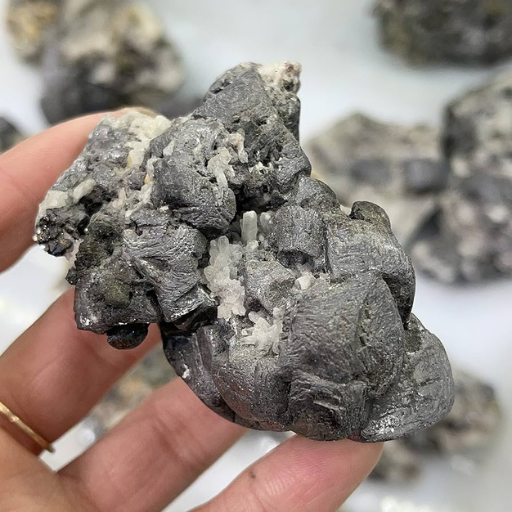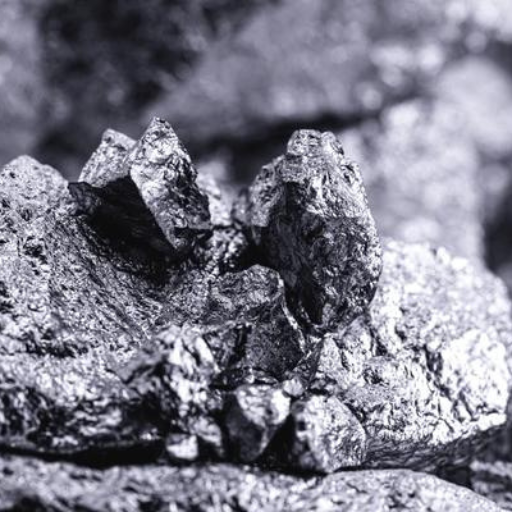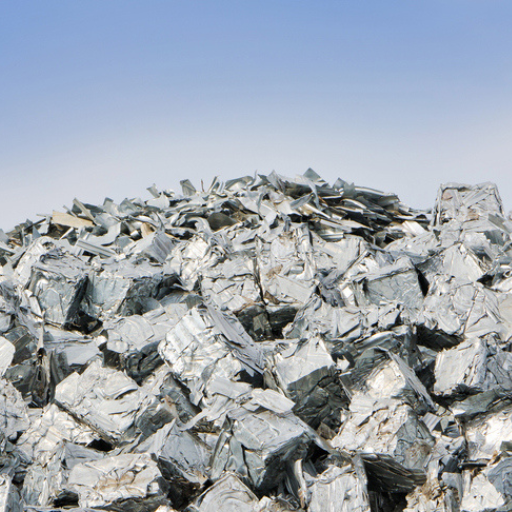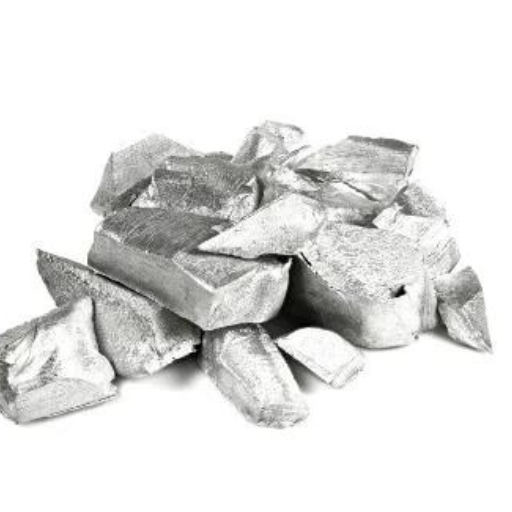Aluminum is a metal that is both lightweight and strong, making it an essential material in various industries. This blog aims to provide a comprehensive overview of raw aluminum, exploring its properties, applications, and significance in today’s world. From the basics of its extraction to its role in cutting-edge technologies, we will delve into what makes aluminum such a valuable resource. Whether you’re a student, industry professional, or simply curious about this ubiquitous metal, this article will equip you with a thorough understanding of raw aluminum and its numerous uses.
What is aluminium used for?
Discuss why aluminium is a versatile metal
The uniqueness of aluminium’s properties makes it highly versatile. It is lightweight but strong, which is good for making car parts to materials used in aerospace. Moreover, it does not corrode easily thus products made from it can last longer. Its excellent electrical and thermal conductivity also means that it can be applied in heat exchangers as well as electrical systems. Furthermore, unlike other metals, aluminum can be recycled without compromise on its properties hence regarded as friendly to environment. These attributes are what make aluminum a vital material across many industries.
Aluminium’s most common products
Unique properties of aluminium result in its use in various products. Below are some of the most common ones;
- Foil and Packaging: Aluminum foil possesses excellent malleability and barrier qualities thus widely used for wrapping foodstuffs, drugs among other consumer goods. Technical Parameter: Thickness is usually 0.006 mm -0 .2 mm giving both flexibility and an effective seal.
- Automotive Components: Car bodies, engine blocks and wheels are made out of aluminum because it is light weight resulting into better fuel consumption and performance respectively. Technical Parameter: The tensile strength of the automotive grade aluminum alloys is generally above 300 MPa.
- Aerospace Structures: Aluminum has the highest strength to weight ratio that optimizes performance at minimum possible mass of aircrafts or spacecrafts. Technical Parameter: Aerospace-grade aluminum alloys like 7075-T6 have tensile strengths over 500 MPa.
- Construction Materials: Windows frames; curtain walls; roofing – all these building elements often contain aluminium elements in them since this material ensures corrosion resistance and long life time for any structure itself . Technical Parameter: Structural aluminum typically maintains a modulus of elasticity of about 70 GPa.
- Electrical Conductors: This attribute makes it useful for electric power lines such as cables hence are normally used along with copper wires during wiring installations or maintenance works done by electrical contractors. Technical Parameter: Aluminum has a conductivity of approximately 61% IACS.
- Consumer Electronics: aluminum is applied in the outer parts of laptops, smartphones and tablets because it conducts heat away from them while at the same time making them look sophisticated. Technical Parameter: Thermal conductivity is approx 235 W/m.K facilitating heat dissipation.
Every application mentioned above exploits the unique technical parameters of aluminum for their advantage thus showing its versatility among several other applications.
Aluminum used in construction
The beneficial characteristics make aluminum one of the most popular materials in construction industry. It is commonly used to make window frames, curtain walls, roofing as well as structural components. The following are examples on how aluminium is used in construction:
Window Frames: Strong, durable and almost maintenance-free qualities of aluminium frames have made them famous. They also provide good thermal insulation and do not corrode easily thus they serve for long time without need for replacement.
- Technical Parameter: Structural aluminum typically maintains a modulus of elasticity of about 70 GPa that guarantees no bending or movement in window framing systems.
Curtain Walls: These walls are made up using aluminum to give buildings a modern stylish looks which can also withstand environmental forces within it.
- Technical Parameter: High tensile strength characteristic found in architectural-grade alloys makes curtain wallsresist wind loads and other impacts with some alloys having tensile strengths exceeding 200 MPa.
Roofing: Aluminum roofs are lightweight, resistant to corrosion and reflect sunlight hence they help reduce cooling loads resulting into energy efficiency improvement.
- Technical Parameter:Aluminum’s corrosion resistance arises due to an oxide layer covering its surface protecting any roofing material from decay over extended period.T
Structural Components: Aluminium beams, columns etc. are lighter yet stronger than other metals that can be put into such uses because it provides favorable strength-to-weight ratio.
- Technical parameter: Structural aluminium is noted to have an average density of about 2.7 g/cm³, which is one third of steel thus making it easier to handle and reducing structural loads.
In this application, the technical parameters of aluminum in construction are highlighted as a guarantee for performance, reliability and durability.
How is raw aluminum extracted?
The bauxite ore
Bauxite is the most important source of aluminum and it mostly consists of hydrated aluminum oxides and hydroxides. Tropical and subtropical weathering of rocks leads to its formation. This mineral contains other substances such as silicon dioxide, titanium oxide and iron oxides in varying amounts. The smelting process involves refining bauxite to produce alumina (alumina), a substance that is electrolytically reduced to form aluminum metal.
Does the Bayer process in aluminum production involve
The principal operation in alumina refining from bauxite is known as the Bayer process. It includes comminuting the bauxite with sodium hydroxide solution which dissolves out the aluminium-bearing minerals leaving impurities that are called red mud. The remaining solution, sodium aluminate, is filtered after which it cools down slowly so that aluminium hydroxide precipitating from it can be collected by filtration and washing followed by heating either by rotary kilns or fluidized bed calciners to give final product, alumina. This product is further used in Hall-Héroult process for obtaining pure molten metal.
Aluminium oxide converted to pure aluminum using electrolysis
Conversion of aluminium oxide into pure aluminium involves the use of electrolysis through what is known as Hall-Héroult process. In this method, cryolite (sodium-aluminum fluoride) that has been melted is utilized in dissolving alumina (aluminum oxide). Thereafter, this mixture containing carbon anodes will be placed into large carbon lined electrolytic cells which act as cathodes while there are other carbon anodes extending downwards towards cryolite-alumina mixtures within them. Alumina thus received dissociates into ions of aluminium and oxygen when electric current passes through cell C14] [P15]. Aluminum ions move toward cathode where they acquire electrons forming molten metal settling at bottom of the cell; whereas oxygen ions approach carbon anodes resulting in carbon dioxide formation with carbon. Such an unceasing process yields a steady stream of pure molten aluminium which is occasionally run off into shapes meant for industrial applications.
What are the characteristics of aluminum alloys?
What Makes Aluminum Alloy Different from Pure Aluminum
Aluminum alloys are different from pure aluminum mainly because of the addition of others like copper, magnesium, silicon, zinc and manganese. These elements boost certain properties in aluminum that make it more suitable for various industrial uses.
Tensile Strength:
- Pure Aluminium: Moderately low tensile strength, about 45 MPa (Megapascals) on average.
- Aluminum Alloys: Improved tensile strength ranging from 150 to over 600MPa depending on the alloy type.
Corrosion Resistance:
- Pure Aluminium: Excellent natural corrosion resistance due to formation of passivating oxide layer.
- Aluminum Alloys: Vary with the specific alloy type; for instance, these resist better than other types of alloys on which it is used while there are those that need extra treatment (2000 series).
Weight:
- Pure Aluminium: Low density approximately 2.7 g/cm³.
- Aluminum Alloys: Have similar low densities although slight variations may occur due to different alloying elements involved.
Thermal and Electrical Conductivity:
- Pure Aluminium: High thermal conductivity (about 235 W/m·K) and high electrical conductivity (about 37.7 million Siemens per meter).
- Aluminum Alloys: However generally have lower thermal and electrical conductivities compared with pure aluminum but they offer better mechanical characteristics e.g., thermal conductivities can range from about 90-200 W/m·K depending on the specific alloy.
Workability/Formability:
- Pure Aluminium: It is very malleable and ductile thus allowing easy shaping and forming processes to take place in this material.
- Aluminum Alloys: Are varied; some such as 3000 series (aluminium-manganese) remain highly workable while others like those in the group of 7000 series(aluminium-zinc), because they are stronger, are less amenable to working.
Aluminum alloys are crucial in aerospace, automotive, and construction industries where there is need for specific property improvements since the alloys are versatile and indispensable.
Commonly used Alloying Elements in Aluminium
Aluminum alloys contain different elements, which enhance their mechanical properties, corrosion resistance and workability. Some of the common alloying elements used in aluminum include:
- Copper (Cu): It adds to strength and hardness but may reduce corrosion resistance and it is commonly used in aerospace applications.
- Magnesium (Mg): It increases strength without significantly reducing ductility and also improves resistance to corrosion thus it is often found in 5000 series alloys.
- Silicon (Si): By lowering melting point and improving fluidity during casting process; it is extensively applied as a welding or brazing material.
- Manganese (Mn): This raises the strength level of aluminum while at the same time helping to resist corrosion; often added with magnesium as one of its counterparts.
- Zinc (Zn): Combining this element with magnesium will increase strength tremendously. The major application areas for zinc enhanced by magnesium are sports industry, marine sector, among others.
- Iron (Fe): Imparts much more strength into aluminium as well as hardening properties though high proportion of iron can be problematic because it makes metal brittle thus corroding easily.
These elements enable creation of particular aluminum alloy types that are appropriate to many industrial needs by balancing inherent lightweight qualities with requirements for improved performance characteristics.
3003 Aluminum Alloy: Introduction
The 3003 aluminium alloy is well-known for its excellent corrosion resistance, ease of fabrication, and moderate strength. This has made it a versatile material that finds use across various sectors such as:
- Cooking Utensils / Food Equipment: 3003 aluminum provides an ability to withstand corrosive attack combined with easy cleaning making it a popular choice for manufacturing cookware- cooking utensils including pots, pans, storage containers both at home and in commercial kitchens.
- Automotive Industry: The good bodywork and its lightweight characteristics, make it a perfect selection for automotive panels, fuel tanks, and other parts where weight reduction means higher fuel efficiency and performance.
- Heat Exchangers: In heat exchangers, radiators and air conditioning units this alloy’s excellent conductivity of thermal energy as well as its resistance towards corrosion makes it very effective.
- Building and Construction: 3003 aluminium is used for roofing, siding, gutters and downspouts because of durability over time with minimal maintenance requirements.
- Chemical Equipment: This material is also resistant to chemical corrosion thus making it suitable for use in chemical storage tanks, piping, and processing equipment.
Thus 3003 Aluminum Alloy balances strength formability and resistance properties so that it can maintain consistent performance over a variety of industries and applications.
How is aluminum metal processed?
What is the process of producing ingots?
To start with, aluminum ingots are made from bauxite ore which is the principle source of aluminum. Bauxite is mined and then it is refined into alumina through Bayer process which involves crushing of the ore in high temperatures with addition of sodium hydroxide. The next step involves Hall-Héroult process where by alumina is dissolved in molten cryolite and an electrical current passed through it using a reduction cell. In this electrolysis process, aluminum is separated from oxygen producing pure molten aluminum.
After that, the molten aluminium is poured in moulds to form ingots. These ingots can have different sizes and shapes depending on their uses and they are left to cool off until they solidify. Often times, surface impurities are removed by trimming or scalping after solidification so as to get rid of them thereby ensuring a good quality aluminum product that can be used for further processing or fabrication.
Anodised Aluminum and Its Advantages
Anodized aluminum is a type of aluminium that has been treated using electrochemical processes to make its natural oxide coating thicker. This controlled oxidation results in a finish that’s harder, more resistant to corrosion as well as wear than untreated aluminium itself. Consequently, during anodization not only do we strengthen material but also obtain numerous decorative finishes including variety colors without spoiling metal’s inherent properties. Anodized Aluminium, therefore, last longer because its durability improved thus it corrodes slowly; moreover abrasion resistance increases while visual appearance improves too making it suitable for various architectural elements such as consumer electronics or cooking utensils.
Can Aluminum be CNC Machined?
Aluminum can be machined with CNC machines since this method has proven effective when used on them (aluminum). The properties possessed by Aluminum such as light weightiness, softness and excellent machinability make it the best choice for—CNC machining. This process ensures super accuracy and constant quality in the production of parts and components. Additionally, Aluminum is good at heat dissipation hence it is not easy to warp during machining while post-machining anodizing can also be employed to enhance final product durability as well as appearance. This implies that CNC machining of aluminum has a wide range of applications in various industries like aerospace, automotive, electronics etc.
What are the environmental impacts of aluminum production?
Is red mud detrimental to the environment?
Yes, red mud affects the environment. From my research, I have come across significant environmental challenges associated with red mud, a waste product of aluminum production. It is highly alkaline and can if not properly managed contaminate soil and water sources. There are examples where it has caused ecological damage such as harming aquatic life or reducing soil fertility. Effective management and mitigation strategies are key to minimizing its environmental impact.
The effect of aluminum shavings or metal shavings
There are several environmental and safety impacts tied to aluminum shavings or metal shavings. According to my research wrong disposal of aluminum shavings could result in environmental pollution including soil and water contamination. These shavings can easily disperse because they are lightweight and pose a risk to both terrestrial and aquatic life. Safe handling requires that these shards be collected and recycled correctly due to the fact that aluminum is highly recyclable. The high surface area-to-volume ratio of metal shavings makes them more reactive to heat hence posing a fire hazard. Thus, it is important never to leave these shards near anything that can cause them to ignite. Additionally, maintaining proper ventilation systems as well as personal protective equipment for staff dealing with these shards prevents respiratory issues from arising. Aluminum shavings and metal ones may be hazardous if not properly addressed in terms of their health implications.
Is there plenty of aluminum around on earth?
Aluminum is really an abundant type of metal on Earth based on my findings about top sources though it might not look so at first sight. It takes up about 8% by weight thereby being the third most common element in the crust of the Earth’s lithosphere. Mostly mined from bauxite, which contains 15-25% Al2O3, Al comes in abundance on our planet being well distributed throughout various regions ensuring steady supplies required for its industrial production processes. Though extraction process involves huge energy requirement together with technical infrastructure, yet this implies that availability of bauxite ore does not limit production. No wonder the omnipresent aluminum is used so widely in such industries as construction, transport and packaging.
Reference sources
- Title: Aluminum: The Element of Sustainability
- Source: Aluminium.org
- Summary: This article from Aluminium.org offers a detailed look into the properties, uses, and sustainability aspects of aluminum. It covers the entire lifecycle of aluminum from extraction to recycling, highlighting why it is considered a versatile and sustainable metal. This source is credible, being from a reputable industry association, and provides a comprehensive overview for those interested in both the technical and environmental impact of raw aluminum.
- Title: What is Aluminum? – Properties of Aluminum & It’s Uses
- Source: Matmatch Blog
- Summary: Matmatch’s blog post delves into the fundamental properties of aluminum, including its chemical and physical characteristics, common alloys, and widespread applications. The article is well-researched, using scientific data and industry insights to explain why aluminum is so highly valued in various sectors like automotive, aerospace, and construction. This source is particularly useful for readers seeking an in-depth understanding of aluminum’s properties and practical uses.
- Title: An Introduction to Aluminum | Pearson Education
- Source: Pearson Education
- Summary: This educational resource offers an academic perspective on aluminum, discussing its historical background, extraction process, refining, and the various forms in which it is utilized. Being an academic source, it ensures high accuracy and thoroughness, making it an excellent resource for students or professionals seeking detailed, reliable information about raw aluminum.
Frequently Asked Questions (FAQs)
Q: What is raw aluminum and how is it produced?
A: It’s one of the most common of all the raw materials used in a number of industries for its distinctive characteristics. Bauxite is the main raw material which is then refined to make alumina; this alumina, in turn, is processed in an aluminium smelter where it undergoes an electrolytic reduction process to yield aluminum. Aluminum may drop to the bottom during this process when the aluminum hydrate crystallizes.
Q: What are the key properties of aluminum?
A: Aluminium has many essential features that make it valuable across various industries. It does not corrode, has a high strength-to-weight ratio, transmits heat well, and alloys with other metals readily. Over 100 aluminum alloys are used for different applications due to these properties.
Q: What is the significance of aluminum’s high strength-to-weight ratio?
A: This makes it highly desirable when lightweight structures are critical such as motor vehicles, space travel and construction where reduced weight can be crucial. This property facilitates making light strong constructions possible .
Q: How does aluminum’s corrosion resistance benefit its uses?
A: In environments that would expose it to moisture and other corrosive substances, aluminium’s ability to withstand corrosion makes it perfect for use. Its application in beverage cans production, building materials or marine sectors for instance among others benefit from such a quality.
Q: What are some common forms of aluminum used in manufacturing?
A: Examples of different forms of manufacturing include; aluminium wire; flat bar and sheeting which have a variety of applications including versatility and additional value-added services.
Q: How much raw aluminum is typically required for industrial applications?
A: The quantity demanded may differ depending on what industry requires but there can be significant differences between them For instance when producing Aluminum Wire or Flat Bars they usually require large amounts while smaller components might use only one pound per piece.










